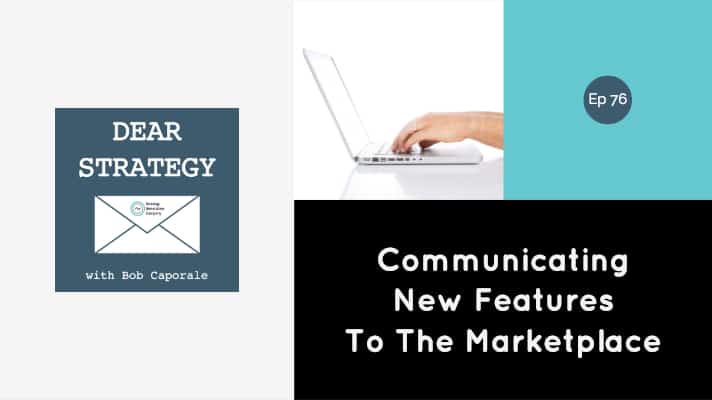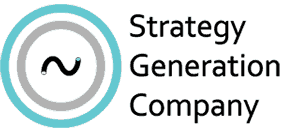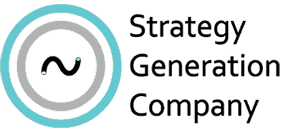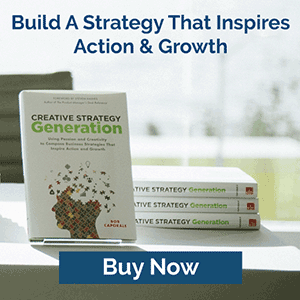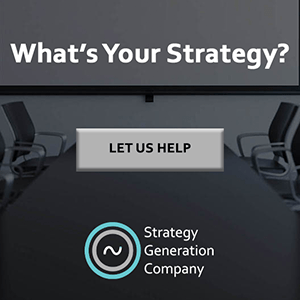Dear Strategy:
“How do you communicate new features to users in a fast, Agile release cadence?”
Here we have a question that could be interpreted as being somewhat more tactical than strategic. However, I am going to try to answer this from an overall company perspective rather than from an individual project perspective, which should bring it a bit more into the strategic realm.
For those of you who are not familiar with the Agile development methodology, I provided an overview back in Episode 030 that I highly recommend you take a peek at before reading on. Essentially, Agile allows companies to release products into the marketplace features at a time – which also makes it uniquely suited to a software type environment. So instead of releasing updates once a year, companies might release feature upgrades as they become available, which could be anywhere from months to weeks apart. The benefit is that customers don’t have to wait for product enhancements, and companies don’t have to wait to act on critical customer feedback. So, everyone wins.
Or so it would seem…
As with anything that appears too good to be true, there are always drawbacks lurking around some hidden corner. And Agile is no different. The good thing about releasing updates only once every year or so is that it tends to be kind of a big deal. There’s lots to announce, and you generally have everyone’s attention on those big, relatively infrequent dates. Compare that to releasing product updates every few weeks, and it’s not hard to see how some level of interest may be lost on both sides of the equation under the Agile scenario.
Think about your own experiences as a customer. A quick glance at my own iPhone reveals that out of the 100 or so apps I have on my device, I have 18 updates that have been released within the last 7 days and are ready to be installed. Looking back in my update history, that appears to be a pretty standard week. And do you think I’m going to read through 18 sets of release notes to find out exactly what has changed for each app? Not a chance. Instead, I’m going to install the updates and then wait to be either pleasantly surprised, incredibly frustrated, or completely indifferent the next time I open each app.
For bug fixes or minor changes, that system probably works just fine. But for anything that is likely to affect my actual user experience, there’s probably a better way.
From a strategic standpoint, modern-day software companies need to do a better job of informing their customers when something is changing. And, no, that doesn’t mean filling thousands of email inboxes with weekly announcements that nobody is going to read! You can save that method for the really big changes, along with social posts, ads, and any other marketing activities that might serve to tell your customers when something really major is coming. But, for all the smaller updates, I recommend providing your customers with a quick and easy link right from within your software that informs them of any user-experience related changes. Make it obvious, make it unobtrusive, and make it really easy to understand.
“From a strategic standpoint, modern-day software companies need to do a better job of informing their customers when something is changing.“
Once that’s done, my next suggestion is to make sure that all of your product support documents have been updated to reflect any recent changes that you may have made. I can’t tell you how many times I look to a company’s knowledge base, only to discover that their very own support materials have already been rendered obsolete. Believe me, nothing is going to frustrate your customers more than your own instructions being wrong!
Of course, even if you do all of this right, there is something else you need to consider that is ultimately going to trump all else. That is, you have to make sure you are actually releasing features that are helping your customers rather than helping yourself. There seems to be a very troubling trend in the Software-as-a Service (SaaS) space where companies are holding their customers hostage through the bundling of needed features with unneeded features at higher than necessary price tiers. From the company’s point of view, this reads as, “I’m giving you all of this value for the low additional price of $X per month.” But from the customer’s point of view, this reads as having to pay an excessively large multiplier for the one or two features that they really can’t live without.
On the podcast, I relayed the story of a company that just did this very thing to me. Without naming names, this company essentially doubled the price of my service (from $30/month to $60/month) by taking a feature that I was using as a regular part of my workflow and only including it in their next highest price tier. The feature itself was worth about $5 extra per month at best. But, suddenly, I couldn’t have it anymore without paying for a lot of other stuff that I absolutely did not need. I committed on the podcast that I would try to move away from that company as soon as possible, and I’m happy to announce that, just prior to writing this post, I was able to find a competitive solution that only cost me the $5 extra per month that I would have been willing to pay to my existing supplier had I only been given the chance. And guess which company I now like better?
If I were to summarize all of this, I would say that Agile is great because it allows you to move at the speed of your customers. But with that additional speed also comes additional responsibility that MUST be built into your overall strategy. Listening to your customers, supporting them properly, respecting their needs, and understanding the true value you’re providing – these are all critical factors to succeeding in a faster-paced environment. And if you’re not willing to make the investments required to keep up with your customers’ actual needs, then, trust us, we’d much rather you take things a little more slowly.
Listen to the podcast episode
Dear Strategy: Episode 076
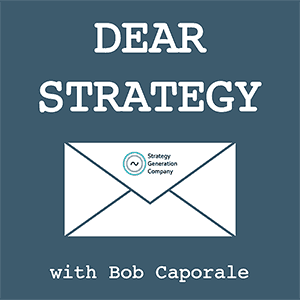
###
Are you interested in strategy workshops for your product, marketing, or business managers? If so, please be sure to visit Strategy Generation Company by clicking the link below:
 Bob Caporale is the founder of Strategy Generation Company, the author of Creative Strategy Generation and the host of the Dear Strategy podcast. You can learn more about his work by visiting bobcaporale.com.
Bob Caporale is the founder of Strategy Generation Company, the author of Creative Strategy Generation and the host of the Dear Strategy podcast. You can learn more about his work by visiting bobcaporale.com.


